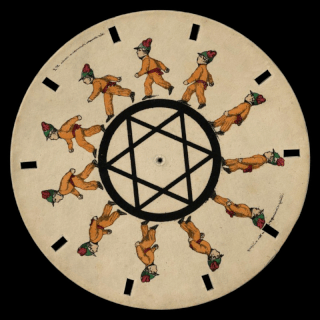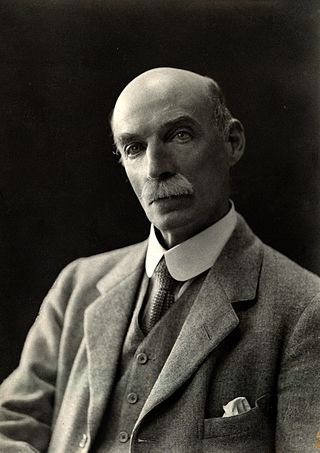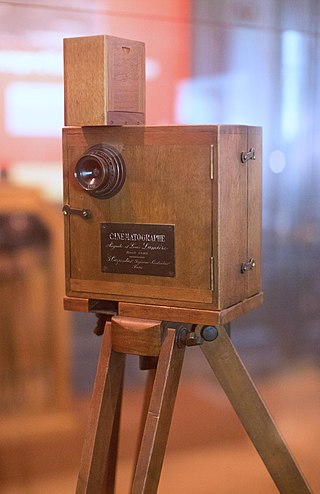
The magic lantern, also known by its Latin name lanterna magica, was an early type of image projector that used pictures—paintings, prints, or photographs—on transparent plates, one or more lenses, and a light source. Because a single lens inverts an image projected through it, slides were inserted upside down in the magic lantern, rendering the projected image correctly oriented.

A camera is an instrument used to capture and store images and videos, either digitally via an electronic image sensor, or chemically via a light-sensitive material such as photographic film. As a pivotal technology in the fields of photography and videography, cameras have played a significant role in the progression of visual arts, media, entertainment, surveillance, and scientific research. The invention of the camera dates back to the 19th century and has since evolved with advancements in technology, leading to a vast array of types and models in the 21st century.

Morphing is a special effect in motion pictures and animations that changes one image or shape into another through a seamless transition. Traditionally such a depiction would be achieved through dissolving techniques on film. Since the early 1990s, this has been replaced by computer software to create more realistic transitions. A similar method is applied to audio recordings, for example, by changing voices or vocal lines.

A slide projector is an optical device for projecting enlarged images of photographic slides onto a screen. Many projectors have mechanical arrangements to show a series of slides loaded into a special tray sequentially.

An overhead projector, like a film or slide projector, uses light to project an enlarged image on a screen, allowing the view of a small document or picture to be shared with a large audience.

A stereoscope is a device for viewing a stereoscopic pair of separate images, depicting left-eye and right-eye views of the same scene, as a single three-dimensional image.

The phenakistiscope was the first widespread animation device that created a fluent illusion of motion. Dubbed Fantascope and Stroboscopische Scheiben by its inventors, it has been known under many other names until the French product name Phénakisticope became common. The phenakistiscope is regarded as one of the first forms of moving media entertainment that paved the way for the future motion picture and film industry. Similar to a GIF animation, it can only show a short continuous loop.

A slide show, or slideshow, is a presentation of a series of still images (slides) on a projection screen or electronic display device, typically in a prearranged sequence. The changes may be automatic and at regular intervals or they may be manually controlled by a presenter or the viewer. Slide shows originally consisted of a series of individual photographic slides projected onto a screen with a slide projector. When referring to the video or computer-based visual equivalent, in which the slides are not individual physical objects.

Phantasmagoria, alternatively fantasmagorie and/or fantasmagoria was a form of horror theatre that used one or more magic lanterns to project frightening images –such as skeletons, demons, and ghosts– onto walls, smoke, or semi-transparent screens, typically using rear projection to keep the lantern out of sight. Mobile or portable projectors were used, allowing the projected image to move and change size on the screen, and multiple projecting devices allowed for quick switching of different images. In many shows, the use of spooky decoration, total darkness, (auto-)suggestive verbal presentation, and sound effects were also key elements. Some shows added a variety of sensory stimulation, including smells and electric shocks. Such elements as required fasting, fatigue, and drugs have been mentioned as methods of making sure spectators would be more convinced of what they saw. The shows started under the guise of actual séances in Germany in the late 18th century and gained popularity through most of Europe throughout the 19th century.

The history of photography began with the discovery of two critical principles: The first is camera obscura image projection, the second is the discovery that some substances are visibly altered by exposure to light. There are no artifacts or descriptions that indicate any attempt to capture images with light sensitive materials prior to the 18th century.

Precursors of film are concepts and devices that have much in common with the later art and techniques of cinema.

Miss Jerry is an 1894 American feature-length black-and-white silent pre-film "Picture Play" written and produced by Alexander Black and starring Blanche Bayliss. Miss Jerry was not a film, but a series of posed magic lantern slides projected onto a screen with a dissolving stereopticon, accompanied by narration and music, making it the first example of a feature-length dramatic fiction on screen.

Leonard Lipton was an American author, filmmaker, lyricist and inventor. At age 19, Lipton wrote the poem that became the basis for the lyrics to the song "Puff, the Magic Dragon". He wrote books on independent filmmaking and become a pioneer in the field of projected three-dimensional imagery. Leonard Lipton developed 3D cinema technology that is used in RealD 3D cinemas. His technology is used to show 3D films on more than 30,000 theater screens worldwide.

A projector or image projector is an optical device that projects an image onto a surface, commonly a projection screen. Most projectors create an image by shining a light through a small transparent lens, but some newer types of projectors can project the image directly, by using lasers. A virtual retinal display, or retinal projector, is a projector that projects an image directly on the retina instead of using an external projection screen.

Owen Graystone Bird (1862–1943) was a British professional photographer, active during the late nineteenth and early twentieth centuries. Some sources give his first name as William instead of Owen, however, all sources agree on the prominent use of Graystone. The cause of confusion about the correct form of Bird's full name is unclear, but it does not seem to be a case of multiple photographers using the names "Graystone" and "Bird" in combination, contemporaneously.

The history of film technology traces the development of techniques for the recording, construction and presentation of motion pictures. When the film medium came about in the 19th century, there already was a centuries old tradition of screening moving images through shadow play and the magic lantern that were very popular with audiences in many parts of the world. Especially the magic lantern influenced much of the projection technology, exhibition practices and cultural implementation of film. Between 1825 and 1840, the relevant technologies of stroboscopic animation, photography and stereoscopy were introduced. For much of the rest of the century, many engineers and inventors tried to combine all these new technologies and the much older technique of projection to create a complete illusion or a complete documentation of reality. Colour photography was usually included in these ambitions and the introduction of the phonograph in 1877 seemed to promise the addition of synchronized sound recordings. Between 1887 and 1894, the first successful short cinematographic presentations were established. The biggest popular breakthrough of the technology came in 1895 with the first projected movies that lasted longer than 10 seconds. During the first years after this breakthrough, most motion pictures lasted about 50 seconds, lacked synchronized sound and natural colour, and were mainly exhibited as novelty attractions. In the first decades of the 20th century, movies grew much longer and the medium quickly developed into one of the most important tools of communication and entertainment. The breakthrough of synchronized sound occurred at the end of the 1920s and that of full color motion picture film in the 1930s. By the start of the 21st century, physical film stock was being replaced with digital film technologies at both ends of the production chain by digital image sensors and projectors.
Henry Langdon Childe (1781–1874) was an English showman, known as a developer of the magic lantern and dissolving views, a precursor of the dissolve in cinematic technique. While the priority question on the technical innovations Childe used is still debated, he established the use of double and triple lanterns for special theatrical effects, to the extent that the equipment involved became generally available through suppliers to other professionals. By the 1840s the "dissolving view", rooted in Gothic horror, had become a staple of illustrated talks with restrained animations.

Barrier-grid animation or picket-fence animation is an animation effect created by moving a striped transparent overlay across an interlaced image. The barrier-grid technique originated in the late 1890s, overlapping with the development of parallax stereography (Relièphographie) for 3D autostereograms. The technique has also been used for color-changing pictures, but to a much lesser extent.

Dissolving views were a popular type of 19th century magic lantern show exhibiting the gradual transition from one projected image to another. The effect is similar to a dissolve in modern filmmaking. Typical examples had landscapes that dissolved from day to night or from summer to winter. The effect was achieved by aligning the projection of two matching images and slowly diminishing the first image while introducing the second image. The subject and the effect of magic lantern dissolving views is similar to the popular Diorama theatre paintings which originated in Paris in 1822. The terms "dissolving views", "dioramic views", or simply "diorama" were often used interchangeably in 19th century magic lantern playbills.
For the history of animation after the development of celluloid film, see history of animation.


















